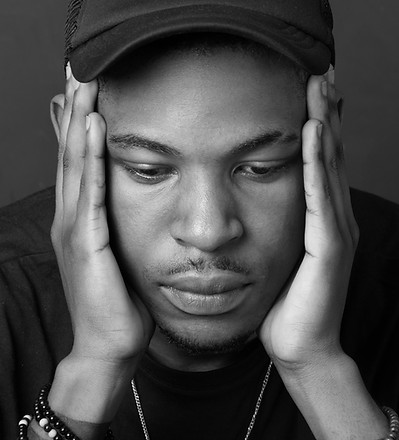
DEPRESSION
An Overview
Depression (major depressive disorder or clinical depression) is a common but serious mood disorder. It causes severe symptoms that affect how you feel, think, and handle daily activities, such as sleeping, eating, or working. To be diagnosed with depression, the symptoms must cause significant distress and be present for at least two weeks.
Some forms of depression are slightly different, or they may develop under unique circumstances, such as:
TYPES OF DEPRESSION
-
Persistent depressive disorder
-
Postpartum depression
-
Psychotic depression
-
Seasonal affective disorder
-
Bipolar disorder
-
Persistent depressive disorder (also called dysthymia) is a depressed mood that lasts for at least two years. A person diagnosed with persistent depressive disorder may have episodes of major depression along with periods of less severe symptoms, but symptoms must last for two years to be considered persistent depressive disorder.
-
Postpartum depression is much more serious than the “baby blues” (relatively mild depressive and anxiety symptoms that typically clear within two weeks after delivery) that many women experience after giving birth. Women with postpartum depression experience full-blown major depression during pregnancy or after delivery (postpartum depression). The feelings of extreme sadness, anxiety, and exhaustion that accompany postpartum depression may make it difficult for these new mothers to complete daily care activities for themselves and/or for their babies.
-
Psychotic depression occurs when a person has severe depression plus some form of psychosis, such as having disturbing false fixed beliefs (delusions) or hearing or seeing upsetting things that others cannot hear or see (hallucinations). The psychotic symptoms typically have a depressive “theme,” such as delusions of guilt, poverty, or illness.
-
Seasonal affective disorder is characterized by the onset of depression during the winter months, when there is less natural sunlight. This depression generally lifts during spring and summer. Winter depression, typically accompanied by social withdrawal, increased sleep, and weight gain, predictably returns every year in seasonal affective disorder.
-
Bipolar disorder is different from depression, but it is included in this list is because someone with bipolar disorder experiences episodes of extremely low moods that meet the criteria for major depression (called “bipolar depression”). But a person with bipolar disorder also experiences extreme high – euphoric or irritable – moods called “mania” or a less severe form called “hypomania.”
Examples of other types of depressive disorders newly added to the diagnostic classification of DSM-5 include disruptive mood dysregulation disorder (diagnosed in children and adolescents) and premenstrual dysphoric disorder (PMDD).

Did you know?
-
Most people experience their first depressive episode between ages 20 and 30.
-
About 10% of people will experience depression during their lifetime.
-
More than 50% of those diagnosed with depression also suffer from anxiety.
-
Women are two times more likely to develop depression.
Signs & Symptoms
If you have been experiencing some of the following signs and symptoms most of the day, nearly every day, for at least two weeks, you may be suffering from depression:
-
Persistent sad, anxious, or “empty” mood
-
Feelings of hopelessness, or pessimism
-
Irritability
-
Feelings of guilt, worthlessness, or helplessness
-
Loss of interest or pleasure in hobbies and activities
-
Decreased energy or fatigue (nearly everyday)
-
Moving or talking more slowly
-
Feeling restless or having trouble sitting still
-
Difficulty concentrating, remembering, or making decisions
-
Difficulty sleeping, early-morning awakening, or oversleeping
-
Appetite and/or weight changes
-
Thoughts of death or suicide, or suicide attempts
-
Aches or pains, headaches, cramps, or digestive problems without a clear physical cause and/or that do not ease even with treatment
Not everyone who is depressed experiences every symptom. Some people experience only a few symptoms while others may experience many. Several persistent symptoms in addition to low mood are required for a diagnosis of major depression, but people with only a few – but distressing – symptoms may benefit from treatment of their “subsyndromal” depression. The severity and frequency of symptoms and how long they last will vary depending on the individual and his or her particular illness. Symptoms may also vary depending on the stage of the illness.
Risk Factors
Depression is one of the most common mental disorders in the U.S. Current research suggests that depression is caused by a combination of genetic, biological, environmental, and psychological factors.
Depression can happen at any age, but often begins in adulthood. Depression is now recognized as occurring in children and adolescents, although it sometimes presents with more prominent irritability than low mood. Many chronic mood and anxiety disorders in adults begin as high levels of anxiety in children.
Depression, especially in midlife or older adults, can co-occur with other serious medical illnesses, such as diabetes, cancer, heart disease, and Parkinson’s disease. These conditions are often worse when depression is present. Sometimes medications taken for these physical illnesses may cause side effects that contribute to depression. A doctor experienced in treating these complicated illnesses can help work out the best treatment strategy.
RISK FACTORS FOR DEPRESSION
-
Personal or family history of depression or similar disorders
-
Major life changes, trauma, or stress
-
Certain physical illnesses and medications
-
Poverty, unemployment, social isolation and other stressful life events
-
Regular drug and alcohol use
Disclaimer: The information on this page is for educational purposes and should not be used to diagnose yourself or someone else. If you or someone you know is showing signs or symptoms which are causing disruption in their lives, please contact a mental health professional.